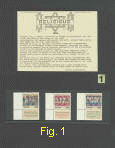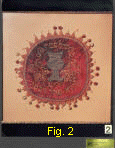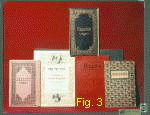|
On
the 5th of April, this year, Jewish communities through out the world will
celebrate the first night of Passover. This day will also mark the
sixty-first anniversary of the Warsaw Ghetto Uprising.
Both Passover and the Warsaw Ghetto Commemoration were also observed by
refugees in the Shanghai Jewish Ghetto fifty-seven years ago.
The Shanghai Jewish Youth Community Center kept the Jewish holiday spirit
alive by conducting their own Seder in April, 1947. An article, shown in
figure one, published in the September 1947
'Future', the centerís own monthly news bulletin, talks about the Seder with
the distinguished guests.
Passover was also celebrated by the parents of yours truly while living in
the Shanghai Ghetto, in spite of the scarcity of food at the time and the
severe rationing of matzos donated by the Russian Jewish community every
year.
The matzo cover and Haggadahs salvaged from Nazi Germany, shown in
figure two and figure
three respectively, were used at our Seder table during the war-years.
Each Haggadah had an inscription from my grandparents dating back to the
early part of the century.
On the nineteenth of April, 1947, exactly two weeks after the Seder, the
Shanghai Jewish Youth Community Center opened its Warsaw Ghetto
Commemoration week with a Yizkor evening service. It was also on the
nineteenth of April in 1943 when on the eve of Passover the final
liquidation of the Warsaw Ghetto began. Nazi plans to round up and deport
the remaining Jews in the ghetto were met with courageous resistance by over
seven-hundred young people who knew from the start that they didnít stand a
chance, but held off the Germans for several weeks with self-devised
explosives. It was the first insurrection in occupied Europe against Nazi
rule.
Gerhard Heimann, a young member of the Shanghai Jewish Youth Community
Center, and a stout Zionist described the Yizkor service in the same
bulletin mentioned above. The article is illustrated in
figure four.
On the fiftieth anniversary of the Warsaw Ghetto Uprising, the Polish Post
and the Israel Postal Authority have jointly issued a commemorative stamp
and Souvenir Leaf shown in figure five.
Illustrated in the background of the Souvenir Leaf is a picture of the
memorial sculpture situated in Warsaw, dedicated to the Warsaw Ghetto
Uprising. A copy of the memorial can be seen at the Yad Vashem Museum in
Jerusalem. Thus, the prediction mentioned in Heimannís article, ďthat once
the day will come when the monument of the Unknown Jewish Soldier will stand
in Erez Israel,Ē came to fruition.
The Warsaw Ghetto Uprising is almost mentioned every time at the Seder table
because, as already mentioned above, it was on the first day of Passover
that Jews of the Warsaw Ghetto stood up against the mighty army of Nazi
Germany.
It is especially worth mentioning at this point that young adults in their
late teens and early twenties, after their own experiences as refugee
children of the Shanghai Ghetto, still had the motivation to commemorate the
Warsaw Ghetto Uprising, and to plan for such a festive Seder.
|











